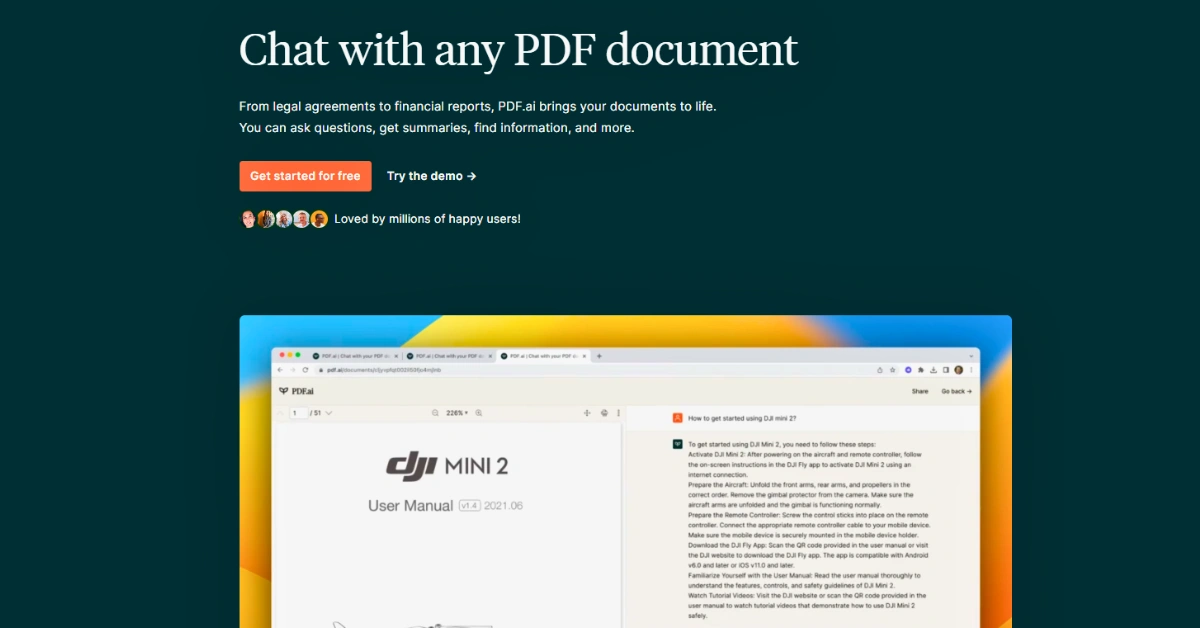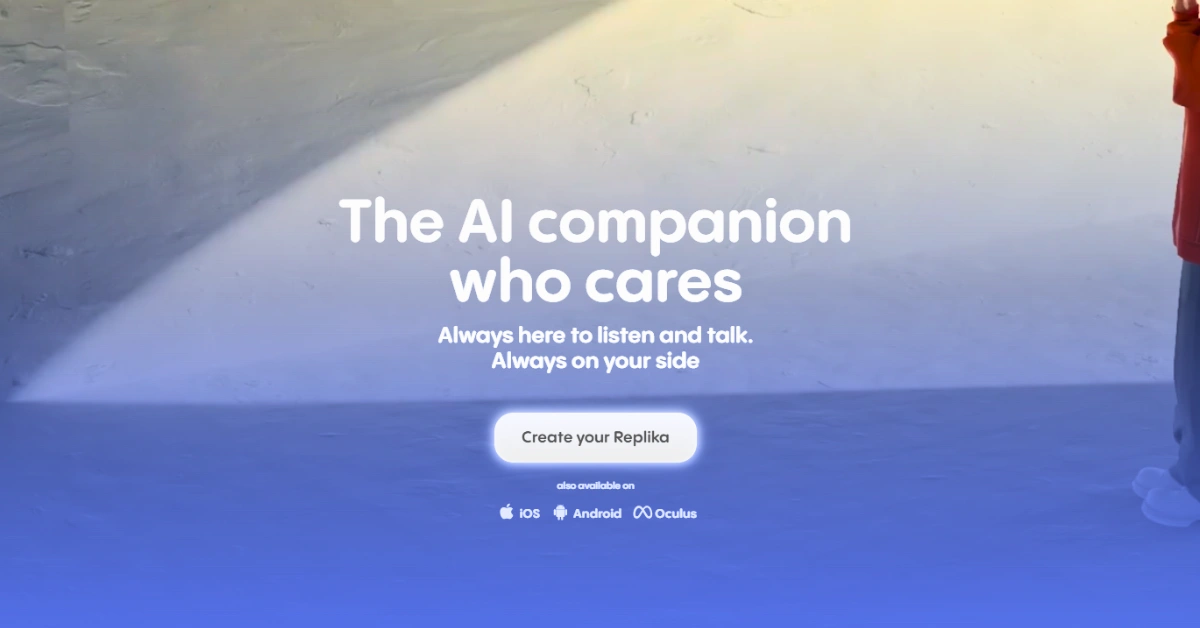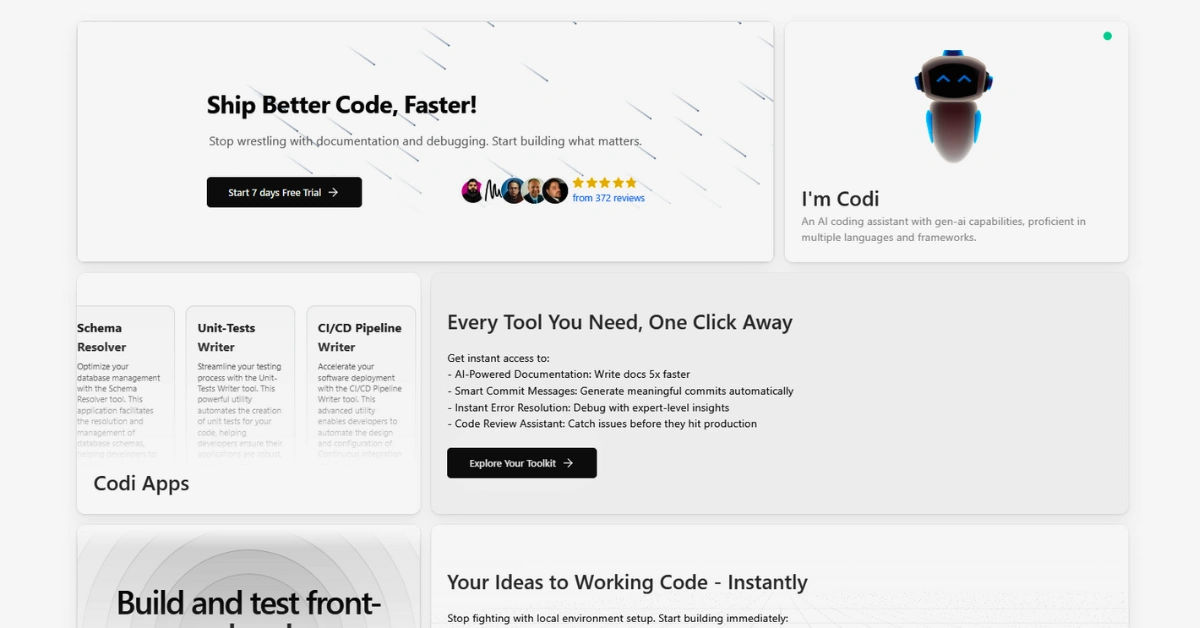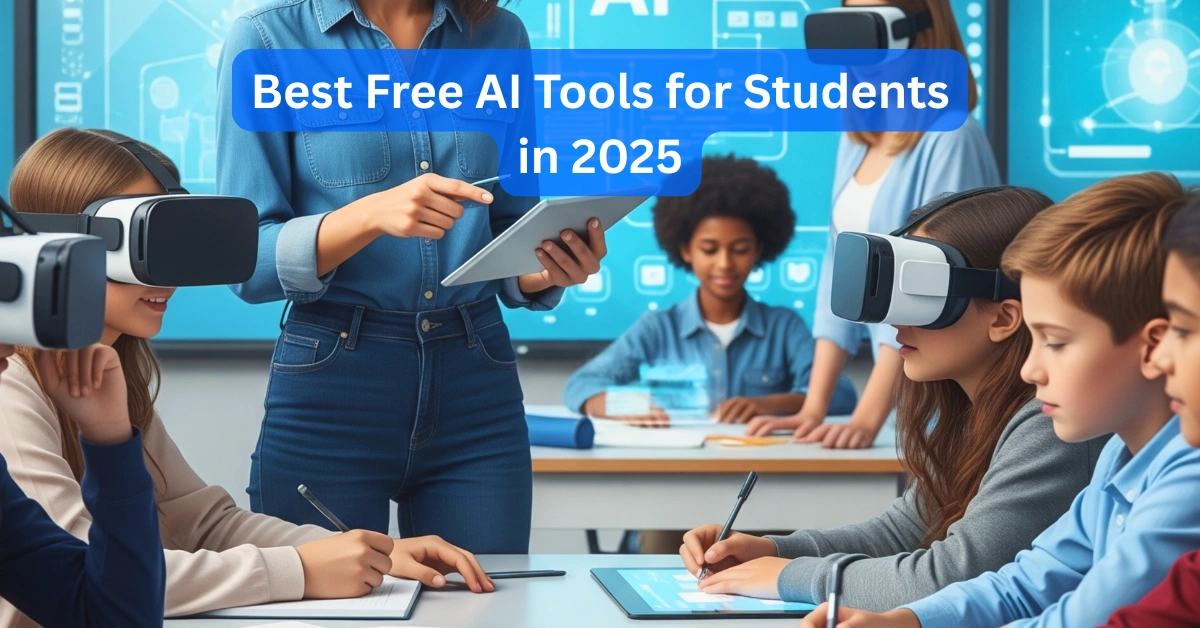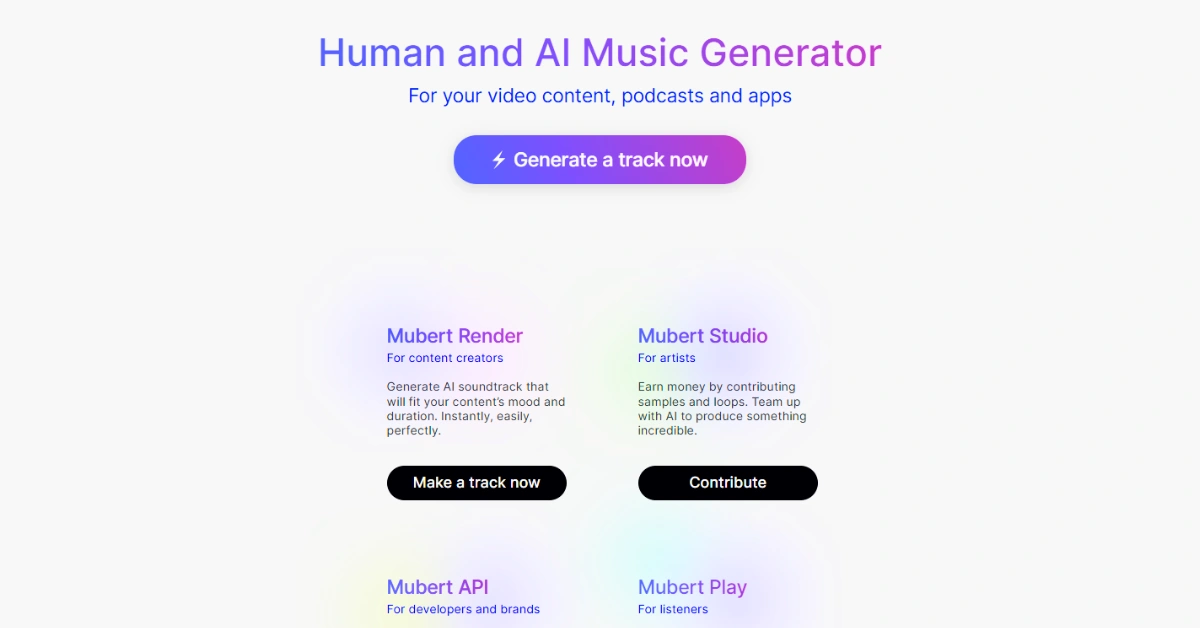AI in Education: Artificial Intelligence Transforming Learning for the Future

Artificial Intelligence– AI in education, particularly generative AI, is transforming the education sector, making it more personalized, accessible, and efficient. As AI grows, it influences the classroom. From innovative tutoring systems to AI-driven assessments, technology is changing how we learn and teach. Not only this, AI chatbots have made getting key information with just a click possible.
But how exactly is AI reshaping the traditional classroom setting? What are the benefits and challenges of AI-powered learning? In this article, we will discover the impact of Artificial Intelligence in education, its real-world applications, and what we can expect from AI-backed learning environments.
The History of AI in Education

- 1950s-1960s: The Foundation was laid with machine learning and NLP concepts. Turing introduced the Turing Test to measure machine intelligence.
- 1970s: First AI-driven tutoring systems like SCHOLAR (a dialogue-based tutoring program) emerged—student-computer interaction.
- 1980s: AI-powered expert systems like Intelligent Tutoring Systems (ITS) developed for math and science personalized learning.
- 1990s: Adaptive learning systems became popular. AI is used for personalized instruction and student assessment. NLP research advanced, and computer-human interaction improved.
- 2000s: AI applications grew with the Internet and big data. Virtual learning environments and AI-driven recommendation systems started helping in online education.
- 2010s: Deep learning and advanced NLP models changed AI in education. AI chatbots, virtual tutors, and intelligent assessment tools are used in schools and universities.
- 2020s: AI-driven platforms provide real-time feedback, automated grading and 24/7 student support. Machine learning models personalized learning experiences. AI-powered analytics tracked student performance.
- Now and Later: AI is changing education by making it interactive, personalized, and accessible. Later, AI will be tutors, and there will be immersive learning and automation in admin tasks. AI will bridge the gap and give equal opportunities to all students.
Key Applications of AI in Education
Artificial Intelligence is changing education by personalizing learning, increasing engagement, and streamlining administrative tasks. AI tools enhance teaching methods, provide instant feedback, and make education more accessible. Below are some applications of AI in education, each explained with real-life examples.

1. Personalization in Learning Roadmap
AI offers individualized learning by understanding students’ strengths, weaknesses, and learning styles. Adaptive learning platforms adjust the content’s difficulty based on student performance, so learning is tailored to the student. This means students can learn at their own pace and not feel overwhelmed or left behind. AI also suggests personalized study materials and practice exercises to address individual needs.
- Example: Squirrel AI, a Chinese adaptive learning platform, personalized lessons for students using AI algorithms. It assesses student progress and offers personalized exercises so each student can learn at their own pace. The system has seen significant improvement in student performance in maths and science.

2. Intelligent Tutoring Systems (ITS)
AI-powered tutoring systems are virtual teachers that provide step-by-step explanations and personalized feedback. They break down complex subjects into simpler concepts. AI tutors can identify weak areas and suggest additional learning resources. ITS makes tutoring available to students who don’t have personal tutors and improves learning outcomes.
- Example: IBM Watson Tutor uses AI to provide personalized tutoring in physics and mathematics. It answers questions, explains difficult concepts, and gives real-time feedback, making learning more effective and engaging.

3. AI-powered Chatbots & Virtual Assistants
AI chatbots and virtual assistants give instant answers to students’ questions and help with coursework, assignments, and scheduling. These AI tools are available 24/7, so students don’t have to depend on teachers for minor questions. Chatbots also help universities in handling administrative queries, guiding students through the admission process, and sending reminders for important deadlines.
- Example: Pounce, Georgia State University’s AI chatbot, helps students with enrollment, financial aid and academic queries. Since its launch, the chatbot has reduced student dropout rates by ensuring students get timely information and support.

4. Auto Grading & Assessment
AI does the grading for you, so teachers can focus on teaching, and evaluation is consistent. AI can grade multiple-choice, short answers, and even essays using NLP. AI-generated reports give you deep insights into student progress so you can see where they need improvement.
- Example: EdX uses AI to grade student assignments and essays. This means students get instant feedback on their work so they can improve their writing without waiting for manual grading.

5. Smart Learning Content
AI creates digital study materials, quizzes, and interactive lessons that are tailored to students’ needs. It turns traditional textbooks into visual summaries, infographics, and adaptive assessments. AI-generated content makes learning more engaging and effective, so students retain more and comprehend more.
- Example: Quizlet generates customized quizzes and flashcards based on students’ learning patterns. The platform adapts to student progress, reinforces key concepts, and improves memory retention.

6. Language Translation & Accessibility
AI translation tools break down language barriers so education is accessible to students everywhere. AI also helps students with disabilities with text-to-speech, speech-to-text and real-time transcription. These features are for students with hearing or visual impairment to make education more inclusive.
Example: Google Translate allows students to translate study materials into different languages, making education more inclusive for non-native speakers. AI-powered transcription tools help students with hearing impairment to follow lectures in real time.

7. Virtual Reality (VR) & Augmented Reality (AR) in Learning
AI boosts VR and AR experiences so students can engage in experiential learning. Virtual simulations allow students to do science experiments, visit historical sites, or practice medical procedures without being physically present. Hands-on learning makes learning more fun and effective.
For example, Google Expeditions allows students to take virtual field trips to historical landmarks, space stations, and the ocean floor. This AI-powered tool makes learning interactive so students can explore the world from their classrooms.
Benefits of AI in Education
Undoubtedly, AI is changing the way we learn and teach. Here are some promising benefits of AI in education.
Education for All Across the Globe
- Khan Academy, Coursera, and Duolingo offered AI-powered platforms to students worldwide.
- AI offers language translation and speech recognition to break language barriers.
- Moreover, the most significant benefit is virtual classrooms and AI tutors to remote and underserved areas.
Better Student Performance and Retention
- Knewton and Century Tech offer adaptive learning to adjust lessons based on student progress.
- Moreover, they offer real-time feedback needed for students to identify weak areas and improve quickly.
- AI gamification and simulations to make learning more fun.
Helps Teachers in Reducing Workload
- Teachers can leverage AI tools that help them reduce their workload by automating administrative tasks.
- AI will automate grading, scheduling, and administrative tasks to save educators time.
- Virtual teaching assistants provide 24/7 support to answer student queries instantly.
- Teachers should focus on one-on-one mentoring and personalized guidance.
AI-Powered Insights to Improve Teaching
- The other important benefits are that AI helps analyze student performance trends to help educators refine lesson plans.
- Predictive analytics is used to identify struggling students early to intervene.
- AI-powered data insights enable teaching to be more effective and personalized.
Challenges and Ethical Considerations of AI in Education
AI in education is good but also comes with challenges and problems to be solved. Data privacy, bias in AI, and overreliance on tech are the issues that need to be managed to have a fair and effective learning environment.
- Privacy and Data Security: AI in education uses data on students, which raises privacy and security concerns. AI-powered platforms track student behavior, performance, and even personal details to personalize learning. But without proper safeguards, this data can be hacked, accessed unauthorizedly, and misused.
- AI in Decision-Making: AI is used to assess student performance, recommend learning paths, and even predict future academic success. But there’s a risk of algorithmic bias where AI makes unfair or inaccurate decisions because of flawed training data.
- Biases in AI: AI is only as biased as the data it’s trained on. If an AI system is trained on limited or biased data, it will reinforce education inequalities. For example, AI-powered tutoring will favour certain learning styles, and language processing tools will struggle with different dialects and accents that affect educational outcomes.
How to Build Ethical AI in Education?

As AI becomes more prevalent in modern classrooms, we need to make sure it’s used ethically. Ethical AI in education should be transparent, fair, bias-free, and private. Here are the key steps to build AI systems that meet these ethical standards:
- Be Fair and Reduce Bias: AI should be trained on diverse and representative data to avoid biased outcomes. Institutions should continuously monitor AI models to prevent discrimination in grading, recommendations, or assessments.
- Protect Student Data: AI systems should follow strict data security policies to safeguard student information. Schools and ed-tech companies should comply with data protection regulations like GDPR and FERPA to prevent unauthorized access.
- Be Transparent and Explainable: AI-driven decisions should be understandable to students, teachers, and parents. Institutions should explain how AI recommendations or grading works.
- Build Ethical Guidelines and Regulations: Institutions should have AI ethics policies that govern AI in classrooms. Governments and stakeholders should work together to create regulations that ensure AI is used responsibly in education.
AI vs. Human Instructional Content
AI is powerful but not a substitute for human teachers. While AI gives personalization, grading and tutoring, human teachers provide emotional support, mentorship and critical thinking guidance that AI can’t.
- AI as a Tool, Not a Teacher:
- AI can do administrative tasks so teachers can focus on creative and interactive teaching.
- Virtual tutors can be available 24/7, but human teachers are available for the whole child.
- AI should augment the classroom experience, not dictate it.
- Human:
- Empathy and social interaction are key to student development.
- AI should give teachers data insights, not dictate education methods.
- Schools should balance AI with traditional teaching for a well-rounded education.
The Future of AI in Education
AI technologies will continue to transform educational institutions. Here are some key innovations we can expect in the future.
- AI will learn students’ strengths and weaknesses and adapt content to their needs.
- AI tutors will give real-time feedback and adaptive lessons to help students learn at their own speed.
- 24/7 support through AI chatbots that will answer questions, explain things, and do administrative tasks.
- AI will reduce teachers’ workloads by automating grading, attendance tracking, and curriculum planning, allowing them to focus on mentoring and creative teaching.
- AI tools will improve literacy by detecting errors, suggesting corrections, and refining writing styles.
- AI will give in-depth performance analytics so teachers can design better teaching strategies and personalised interventions.
- Adaptive AI will help students with disabilities through features like speech-to-text and AI-generated subtitles.
- AI-powered virtual and augmented reality will create interactive learning experiences.
- AI will bridge learning gaps, provide equal opportunities, and make education more dynamic, imaginative, and student-led.
Policymakers & Educators in AI Adoption
AI is cool but must be managed for good, fair, and practical use. Policymakers and educators will decide the future of AI in education.
- For Policymakers:
- Make ethics guidelines to stop bias in AI.
- Get data privacy and security laws in place to protect student data.
- Fund AI training for educators to get tech in the classroom.
- For Educators:
- Adjust teaching to use AI well and keep the human part.
- Use AI to know your students and improve your teaching.
- Advocate for balanced AI so tech doesn’t replace teaching.
Conclusion
AI is changing education, making it more personal, accessible, and efficient. From Adaptive learning platforms to AI tutors, tech is engaging students and reducing teacher workload. However, data privacy, bias, and overreliance on AI need to be managed.
In short, Balance is key—AI should support educators, not replace them, and provide a human-centric learning experience. Policymakers and institutions need to create AI guidelines and promote fairness in AI education.
Looking forward, integrating AI will shape the future of learning, innovation and inclusivity. When used responsibly, AI will build a more innovative and equal education system for future generations.
FAQs
How is AI used in education?
- AI in educational settings is used in several ways, including personalized learning, automated grading, advanced tutoring systems, and smart learning.
How will AI change the future of education?
- AI will enhance adaptive learning, make administrative tasks easy and improve accessibility.

